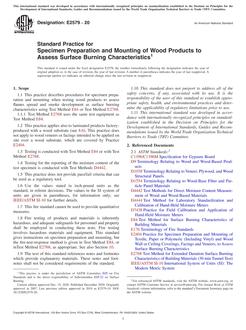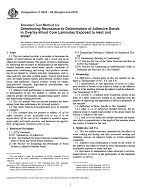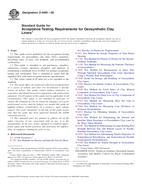1.1 This practice describe the temperature calibration of thermogravimetric analyzers over the temperature range from 25 to 1500°C and is applicable to commercial and custom-built apparatus. This calibration may be accomplished by the use of either melting point standards or magnetic transition standards.
1.2 The mass change curve in thermogravimetry results from a number of influences, some of which are characteristic of the specimen holder assembly and atmosphere rather than the specimen. The variations from instrument to instrument occur in the point of measurement of the temperature, the nature of the material, its size and packing, the geometry and composition of the specimen container, the geometry and design of the furnace, and the accuracy and sensitivity of the temperature sensor and displaying scales. These all contribute to differences in measured temperatures, which may exceed 20°C. In addition, some sample holder assemblies will show variations of measured temperature with sample size or heating/cooling rate, or both. Since it is neither practical nor advisable to standardize sample holders or thermobalance geometries, instruments may be calibrated by measurement of the deviation of a melting or magnetic (Curie Point) transition temperature from the standard reference temperature. This deviation can be applied as a correction term to subsequent measurements.
1.3 This practice assumes that the indicated temperature of the instrument is linear over the range defined by a two-point calibration and that this linearity has been verified. These two calibration temperatures should be as close to the experimental measurements to be made as possible.
1.4 This practice describes three procedures for temperature calibration of thermogravimetric analyzers using any type balance. Procedures A and B use melting point standards with vertical and horizontal balances. Procedure C uses magnetic transition standards for calibration. Procedure A is designed specifically for use with horizontal-type balances using external furnaces. Procedure B is designed specifically for use with vertical hang-down balances using either internal or external furnaces. No procedure is restricted to the use of the furnace type described in that procedure.
1.5 Computer or electronic-based instruments, techniques, or data treatment equivalent to this procedure may be used.
Note 1 – Since all electronic data treatments are not equivalent, the user shall verify equivalency prior to use.
1.6 The data generated by these procedures can be used to correct the temperature scale of the instrument by either a positive or negative amount using either a two-point temperature calibration procedure or a multi-point temperature calibration with best line fit for the generated data.
Note 2 – A single-point calibration may be used where this is the only procedure possible or practical. The use of a single-point procedure is not recommended.
1.7 SI units are standard.
1.8 This practice is related to ISO 11358 but provides information and methods not found in ISO 11358 .
1.9 This standard does not purport to address all of the safety problems, if any, associated with its use. It is the responsibility of the user of this standard to establish appropriate safety and health practices and determine the applicability of regulatory limitations prior to use.
Product Details
- Published:
- 05/01/2004
- Number of Pages:
- 9
- File Size:
- 1 file , 110 KB
- Redline File Size:
- 2 files , 200 KB


